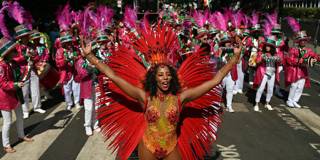The Notting Hill Carnival is a perfect example of what is wrong with the prevailing approach to economic development and policymaking. Far from representing a cost to the local community, this globally important Black cultural event yields far-reaching social and economic returns.
LONDON – This month, one of the greatest celebrations of Caribbean culture returns to the streets of West London. The Notting Hill Carnival – like many carnivals around the world – is the brainchild of the descendants of formerly enslaved Africans, drawing on traditions of music and performance. The smell of jerk chicken and the sounds of Soca and steel pans echo through the streets, guiding Mas bands donned in vibrant colors, feathers, and beads.

LONDON – This month, one of the greatest celebrations of Caribbean culture returns to the streets of West London. The Notting Hill Carnival – like many carnivals around the world – is the brainchild of the descendants of formerly enslaved Africans, drawing on traditions of music and performance. The smell of jerk chicken and the sounds of Soca and steel pans echo through the streets, guiding Mas bands donned in vibrant colors, feathers, and beads.